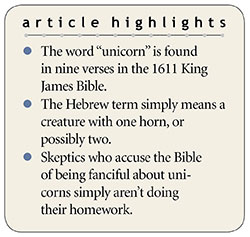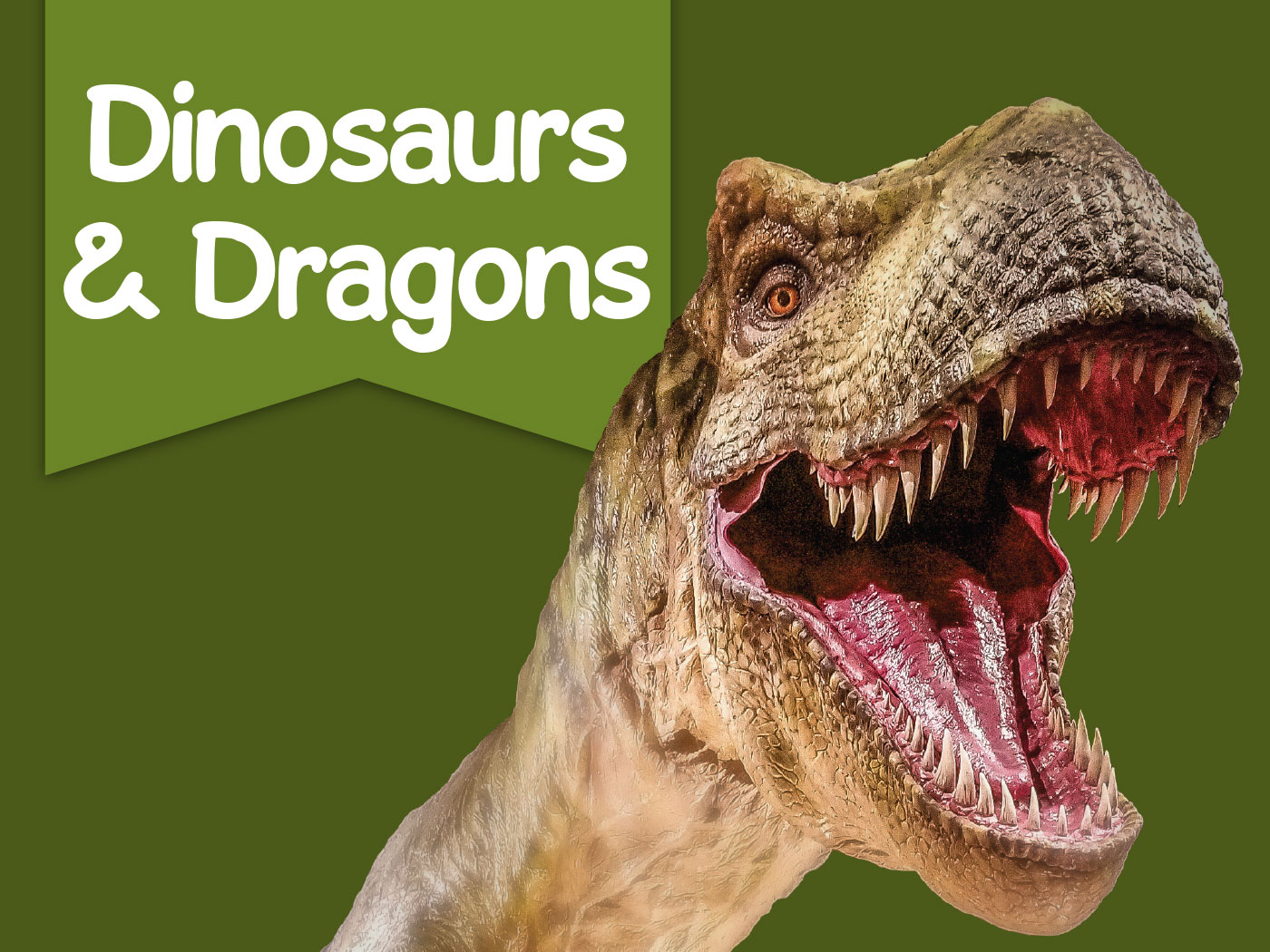Skeptics mockingly poke fun at the King James Bible’s mention of unicorns, accusing the Bible of being unscientific.1,2 Such ridicule is readily refuted, however, by Hebrew vocabulary and zoological history.
The scoffer’s ridicule of unicorns relies upon this flawed reasoning:
Assumption A: If the Bible is perfectly true and credible, it would not report unicorns as real animals.
Assumption B: The Bible reports unicorns as real animals.
Conclusion: Therefore, the Bible can’t be perfectly true and credible.
 Besides other sophistic sleights, this syllogism employs what is known as a straw-man fallacy,3 implying that the English term unicorn is the core of the controversy—rather than determining what the Hebrew noun re’e¯m actually means.4
Besides other sophistic sleights, this syllogism employs what is known as a straw-man fallacy,3 implying that the English term unicorn is the core of the controversy—rather than determining what the Hebrew noun re’e¯m actually means.4
Assumption A also contains the uniformitarian fallacy, assuming that re’e¯m must match some animal alive today—ignoring extinction scenarios.2
Assumption B additionally contains a bait-and-switch fallacy, assuming that imaginary unicorns of fairy tales and cartoons must match the Bible’s re’e¯m. Yet, relevant Bible passages show re’e¯m was more like a wild bovine or rhinoceros, never portraying some kind of spiral-horned horse.4
Could the unicorn of the King James Bible be a rhinoceros, perhaps a one-horned variety? Consider the primary definition of unicorn in the 1828 edition of Noah Webster’s dictionary:
Unicorn: 1. An animal with one horn; the monoceros. This name is often applied to the rhinoceros.5
Rhinoceros traits, it turns out, fit the traits of re’e¯m as reported in Scripture. However, unlike the English word unicorn, which is based on a Latin term meaning “having one horn,” the noun re’e¯m does not demand a one-horned beast. So, maybe re’e¯m was a two-horned rhino.5,6
Could the scriptural unicorn be a wild, horned bovine? A plausible candidate is the now-extinct aurochs2 or one of its wild progeny, such as bison.7 Both are horned (see Psalm 22:21; Deuteronomy 33:17), powerfully built (Numbers 23:22), and biologically comparable to domesticated bovines (Psalm 29:6; Isaiah 34:7). Harnessing such undomesticated bovines to plow field furrows would be a farmer’s futile folly (see Job 39:9-10).
Could the scriptural unicorn be a wild, horned bovine? A plausible candidate is the now-extinct aurochs or one of its wild progeny, such as bison. ![]()
So, what does this prove? First, the skeptic’s uniformitarian fallacy disqualifies anachronistic criticisms of Job 39:9 and other Scriptures that refer to re’e¯m.
Second, the skeptic’s attempt to equate the English term unicorn as used in 1611, when the King James Bible was translated, to a spiral-horned horse is a bait-and-switch-facilitated straw-man challenge because there are plausible candidates among real-world animals that fit the traits of the Bible’s re’e¯m. Consequently, the scoffer’s narrow caricature of biblical unicorns misses the point, pardon the pun.
References
- The King James Bible uses the English word “unicorn” nine times in Scripture: Numbers 23:22 and 24:8; Deuteronomy 33:17; Job 39:9-10; Psalms 22:21 (v. 22 in biblical Hebrew), 29:6 and 92:10; Isaiah 34:7.
- Dr. Henry Morris concluded that the unicorn of Job 39:9 was a wild, ox-like bovine, the aurochs, that became extinct: “The unicorn is supposedly a mythological animal; actually the creature referred to here is the extinct aurochs, or wild ox, a fierce animal that once inhabited this region. Many of the animals mentioned [in Job 39], as well as other parts of the Old Testament, are of very uncertain identity, and various translators have tied them to a considerable diversity of modern animals. The probable reason for this uncertainty is that many of the animals, like the ‘unicorn,’ are now extinct.” Footnote to Job 39:9, Morris, H. 2012. The Henry Morris Study Bible. Green Forest, AR: Master Books, 822. Zoologist George Cansdale concluded that re’e¯m was the now-extinct aurochs. Cansdale, G. S. 1976. All the Animals of the Bible Lands. Grand Rapids, MI: Zondervan, 82. Aurochs appear repeatedly on the Ishtar Gate of Babylon, now located in the Pergamon Museum in Berlin.
- Johnson, J. J. S. 2012. Staying on Track Despite Deceptive Distractions. Acts & Facts. 41 (5): 9-11.
- A related inquiry is why Bible scholars seeking to translate re’e¯m into Greek, Latin, and English used words like “unicorn” in their translations. The Septuagint, a Greek translation of the Old Testament, translated re’e¯m as monokerôs. Jerome’s Latin Vulgate translated re’e¯m as rinocerotis in Deuteronomy 33:17 and rinoceros in Job 39:9, and unicornes in Isaiah 34:7! This indicates that at least some translators thought that re’e¯m had one horn, perhaps the one-horned rhinoceros.
- Webster, N. 1995. American Dictionary of the English Language. San Francisco, CA: Foundation for American Christian Education; facsimile of Noah Webster’s 1828 first edition, unpaginated. See also Dinerstein, E. 2003. The Return of the Unicorns: The Natural History and Conservation of the Greater One-Horned Rhinoceros. New York: Columbia University Press.
- Although the English term “unicorn” implies a one-horned beast, the word used in Deuteronomy 33:17 does not, so re’e¯m may refer to two-horned rhinos.
- Bison are powerful and inherently dangerous bovines. Another candidate is the one-horned Arabian oryx antelope, but its less-intimidating traits compared to those of rhinos, bison, and aurochs seem less likely to fit the Bible’s re’e¯m.
* Dr. Johnson is Associate Professor of Apologetics and Chief Academic Officer at the Institute for Creation Research.
















